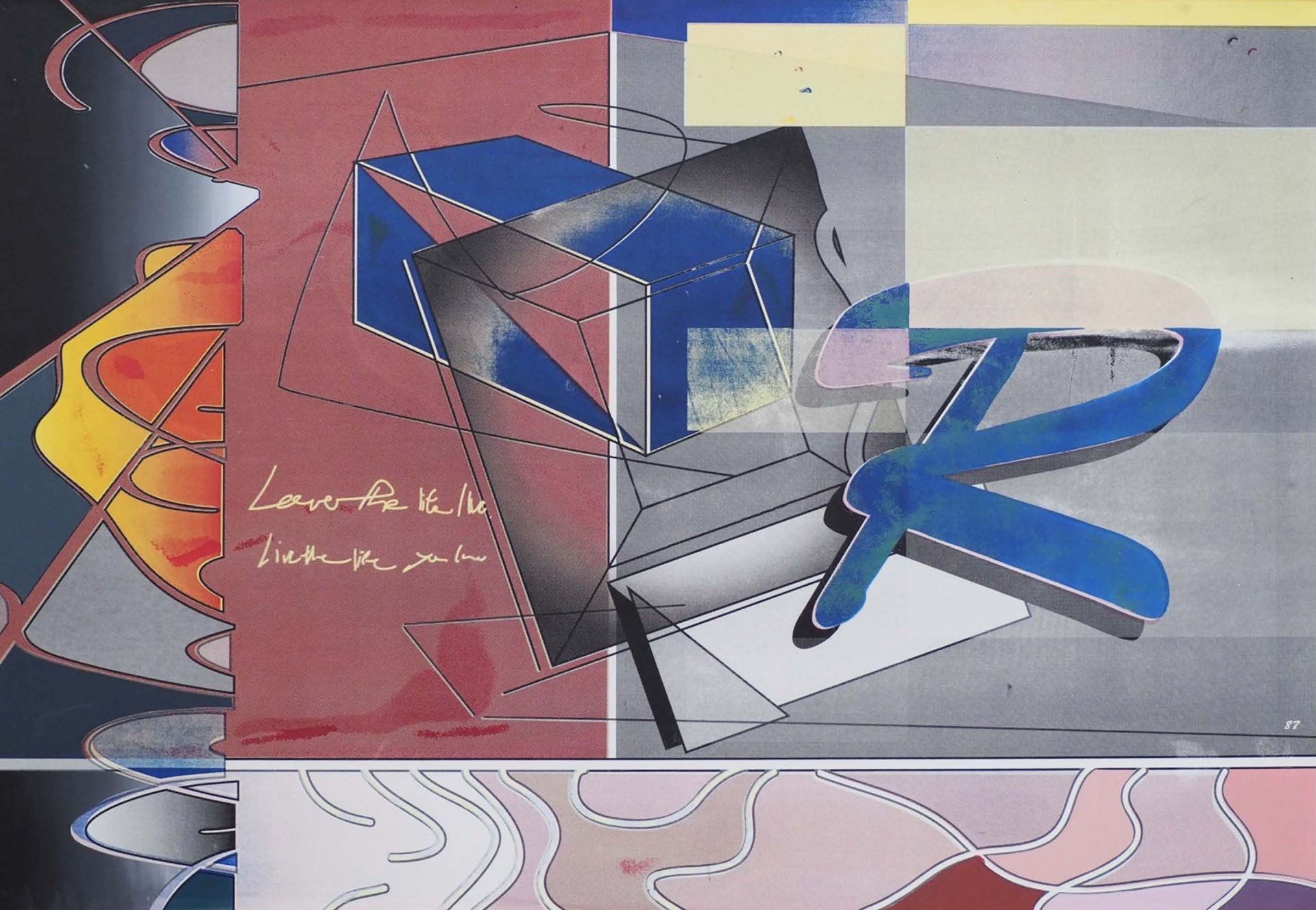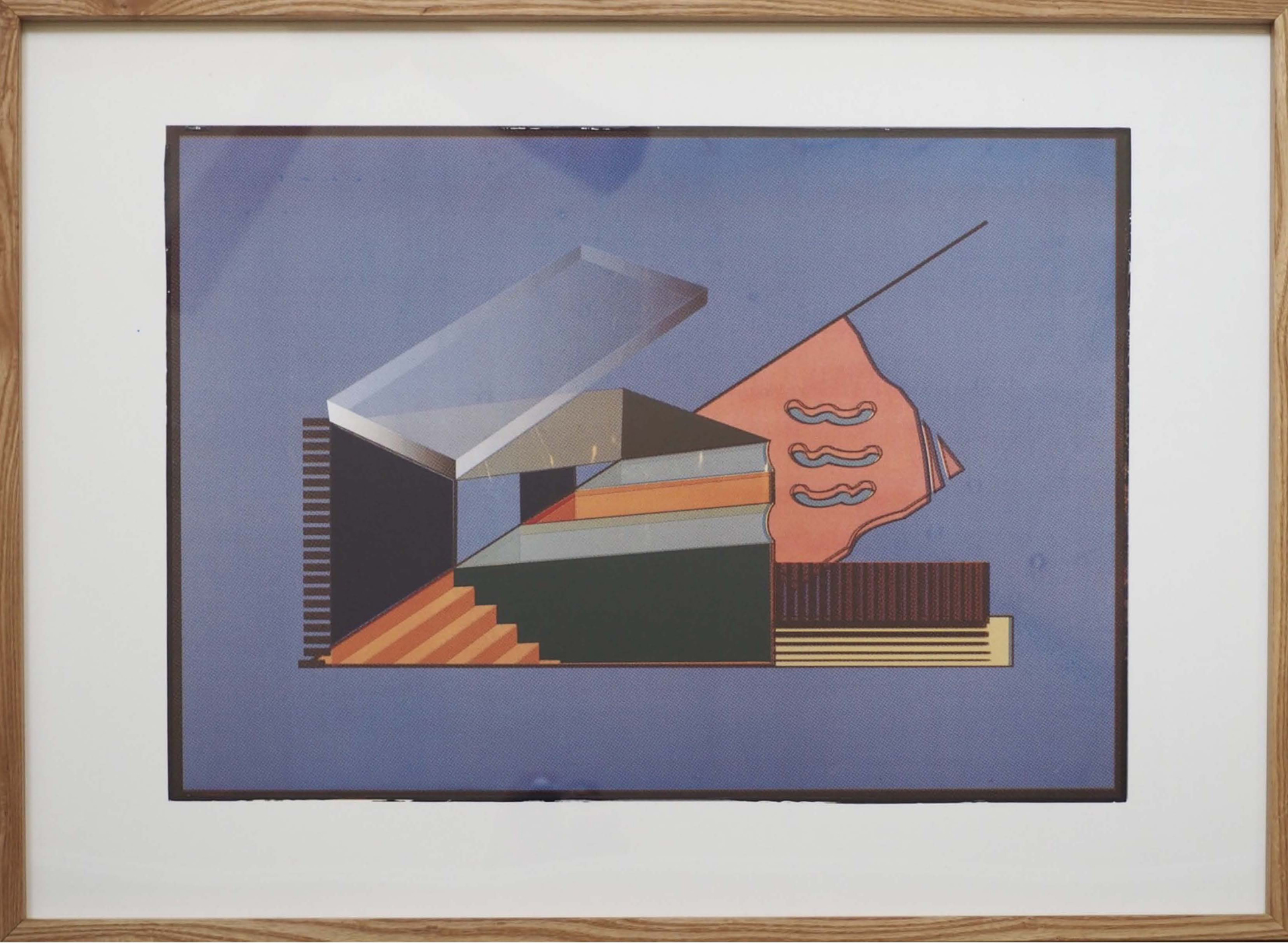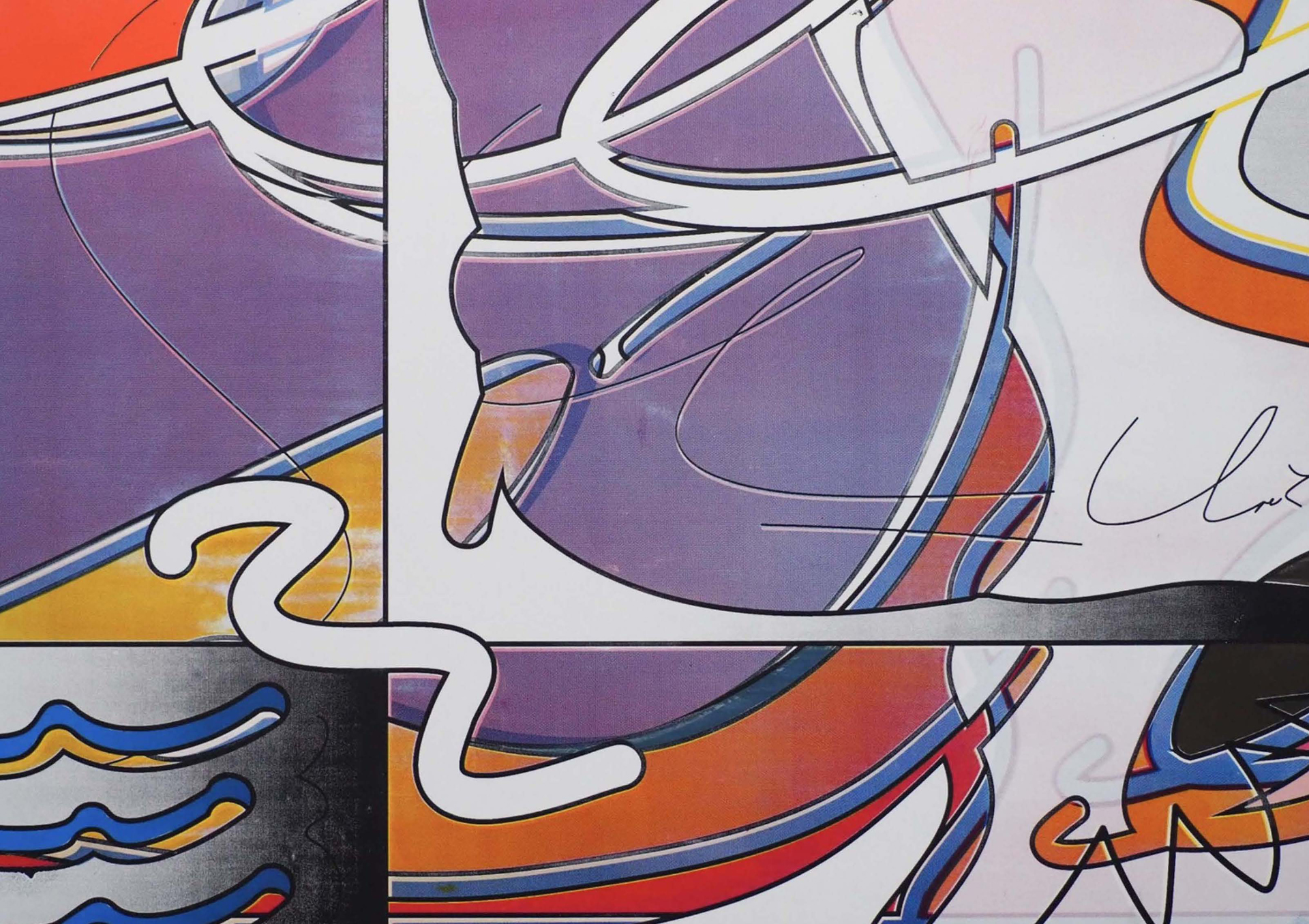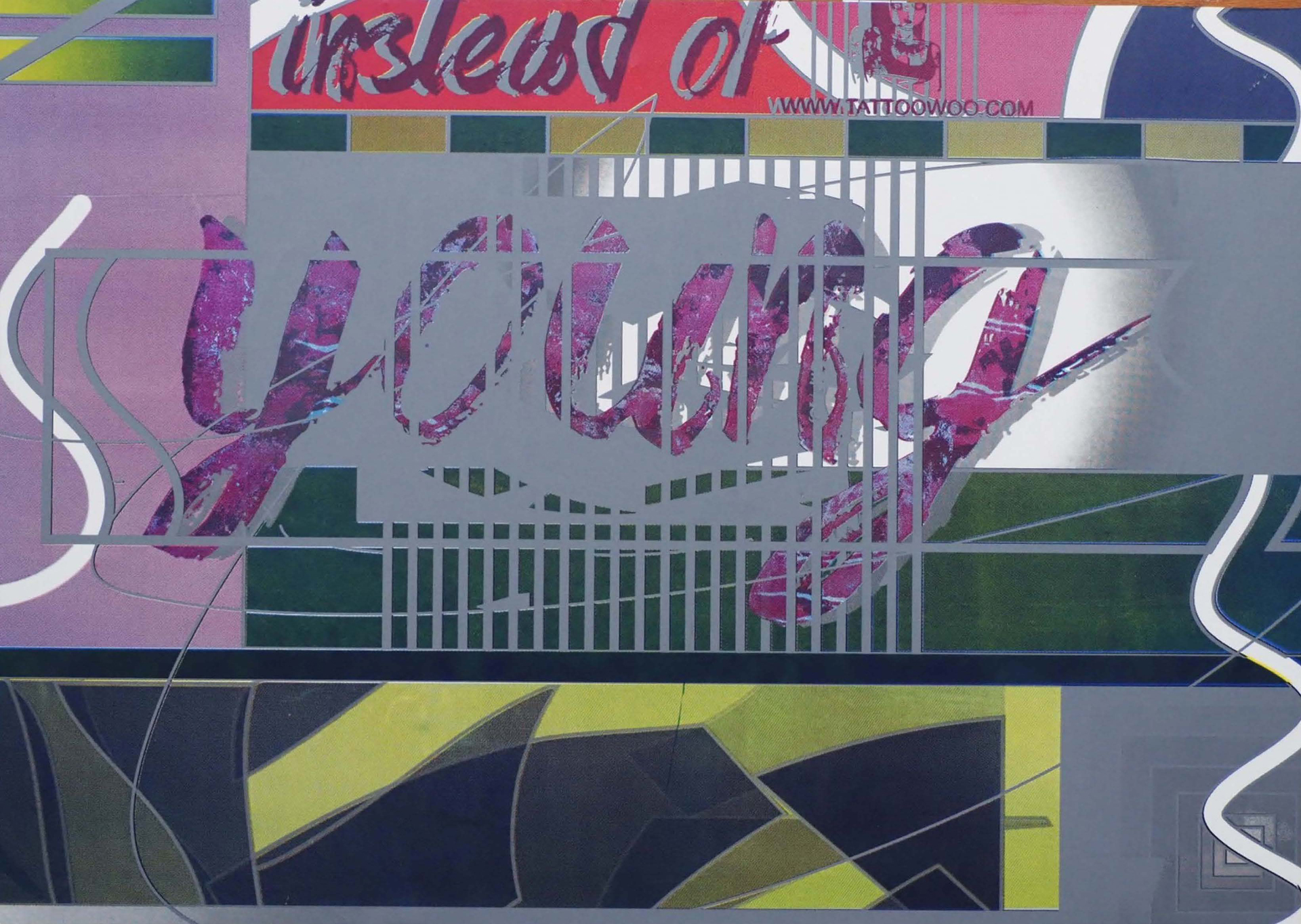Art that cannot be reproduced through reproduction technology
A solo exhibition by artist Kenji Sakai, who uses silkscreen techniques to create geometric and rhythmic patterns, fairy tales that resemble illustrations from children's stories, and graffiti that creates illusions like 3D works. Sakai is based at the alternative space " He also serves as the director of "MATTER" and is active in a wide range of areas, including planning exhibitions as a curator.
When he was a high school student aiming to become an artist, he saw an Andy Warhol exhibition and was struck by the lightness of pop art, with its vivid primary colored images and the rhythm of mass-produced reproductions that were not found in traditional oil paintings.
"For someone like me who just wants to keep creating a lot of work without stopping, the fact that you can produce a lot of work quickly without having to mix colors was appealing. I wanted to do this." After that, he went on to study printmaking at Kyoto Seika University, where he learned about the environment there was conducive to learning silkscreen printing. In his fourth year, he entered a silkscreen print at the National University Print Exhibition, winning an Excellence Award for the first time at his school.
"There's something interesting about the coincidences in how things look when slightly shifted, and I want to incorporate aspects that I can't control and create a unique art that can't be reproduced."
While silkscreen printing is characterized by the wide variety of inks that can be used, this technique uses only CMYK (blue, red, yellow, and black) colors and prints once. By controlling the viscosity of the ink and the order in which it is printed, the appearance and impression can be changed. It is unique in that it limits the art materials and techniques used and produces one-of-a-kind paintings that cannot be reproduced by silkscreen printing, which was developed as a reproduction technique to mass-produce a single image accurately.
Recently, he has been combining silkscreen printing with oil painting, and by changing his art medium from paper to acrylic, he has incorporated the expression of "cracks," giving his work a depth that is not associated with the traditional image of silkscreen printing.
What to do with the things and events that are left behind
In addition to the silkscreen works that have already been released online, this exhibition "Limited" will feature a total of about 20 pieces, including oil paintings that Sakai has been working on recently. The exhibition will be made up of a group of works with different tastes that approach one theme from various angles, and the space will be directed as if directing a group exhibition. The title "Limited," which means "limited, only a few left," comes from Sakai's own view of life, which is the background to the production, in spite of the lineup of diverse works.
"I myself live my life with an awareness of the end, and I think about what to do with the limited space I have left with the things and events that I have left."
Although the world seems to be expanding as we are instantly connected to people, things, and events through social media, is our field of vision narrowing? Sakai believes that there is a hidden depth in our everyday lives that may seem "narrow," and he paints them as abstract paintings. Limiting the use of colors to CMYK is also an attempt to see how broad an expression can be achieved in a narrow area.
This can be seen as a genealogy of the "micropop" concept that art critic Midori Matsui found in the Japanese art scene for about 10 years from the mid-1990s. In an era when the "grand narratives" that were the basis of various values up until now have been lost, people pick up small fragments from their daily lives while thinking about things, places, and times that can no longer be recovered, and connect them to create "new spaces for communication and coexistence." She named this "small avant-garde" attitude micropop and presented it as a way of living in an era of rapid change.
Sakai prints small things that are within reach of the eye and hand in our everyday lives, from major world events to everyday conversations. He believes that the mission of art is to stop people in their tracks and create opportunities for them to think and communicate, and he practices small avant-garde art.
Affirmation of "nameless emotions"
While values and principles common to all of humanity are disappearing, there are growing signs of easy-to-understand polarisation into good and evil, truth and falsehood, nobility and ignorance. In this day and age when people, things and events travel all over the world in an instant, and events on the other side of the world can completely change our lives, Sakai focuses on the “nameless emotions” that settle into the narrow confines of everyday life.
"I capture nameless emotions, such as the intuitive feeling of 'I understand' or 'I don't really understand, but it's fine', in an abstract and multifaceted way and express them. By giving them form, color and space are born, and in a chain reaction, time, thought, and communication are generated. By expressing them as paintings (works of art) that remain there unchanging, I leave nameless emotions and communication for the future."
Rather than forcing those feelings into something easy to understand, if you don't understand, leave it as it is. Affirm the fact that you don't understand. If you don't understand something now, you can continue to think deeply about it. Sakai says that this is much more enjoyable, even in painting, and that he wants to create works that will last for a long time.
The infinite depth of life in our narrow everyday lives
"Rather than doing the same thing over and over, constantly changing the materials and color combinations fits my lifestyle. I'm not attached to anything, so I try not to get bored. Right now, I'm still thinking about how I can continue doing silkscreen printing without getting bored, but I might quit altogether and focus on oil painting. I never stop working, so I can start something new whenever I want without fear."
Nameless emotions that lurk in an age where clarity is all that is required. Looking at the shadows here and there in our everyday lives, Sakai moves things and events to the extent that he can. What Sakai shows with the lightness of his pop art is the preciousness of everyday life. The colors printed over it represent the infinite depth of the fact that finite human beings are living here and now.








